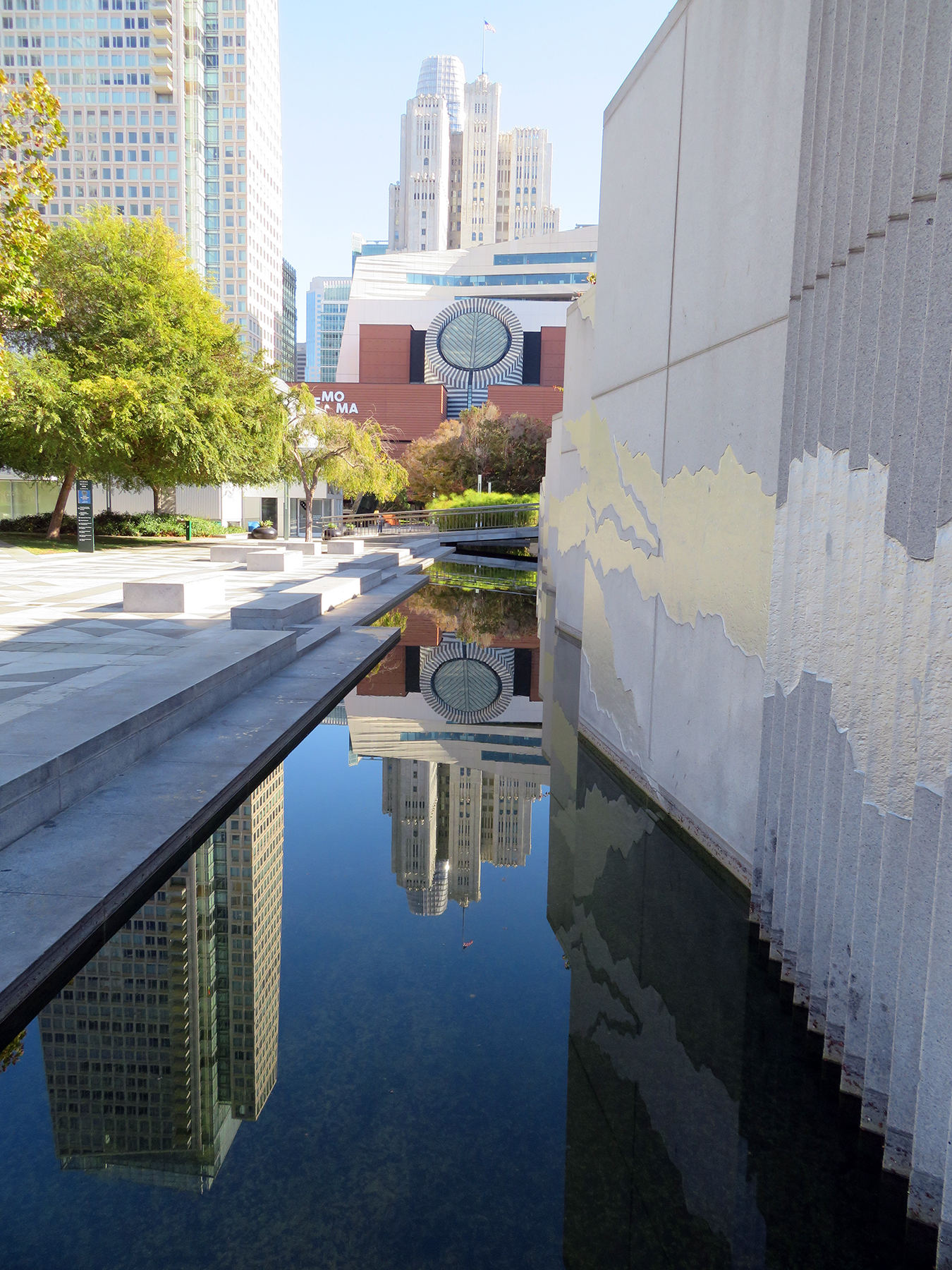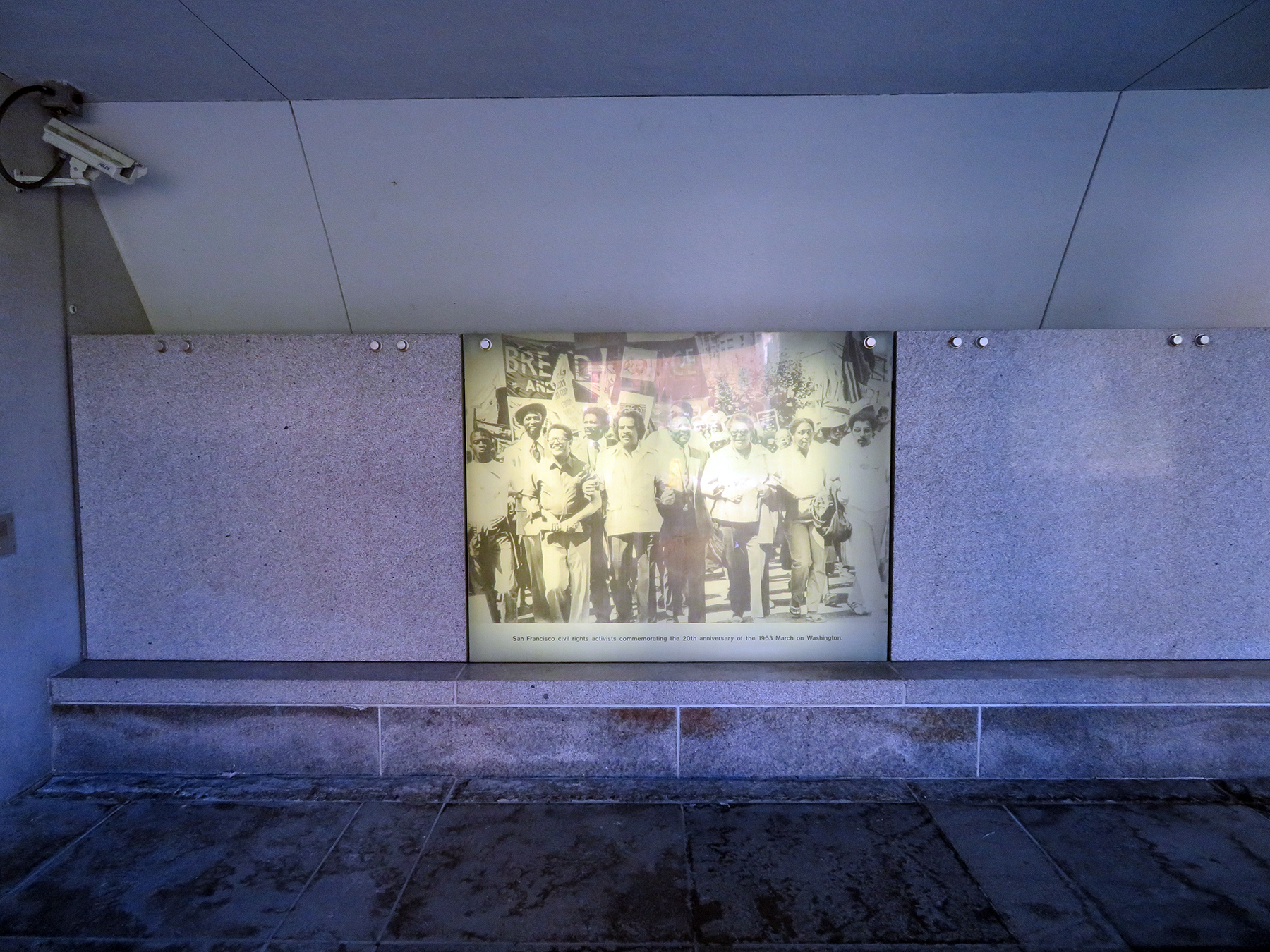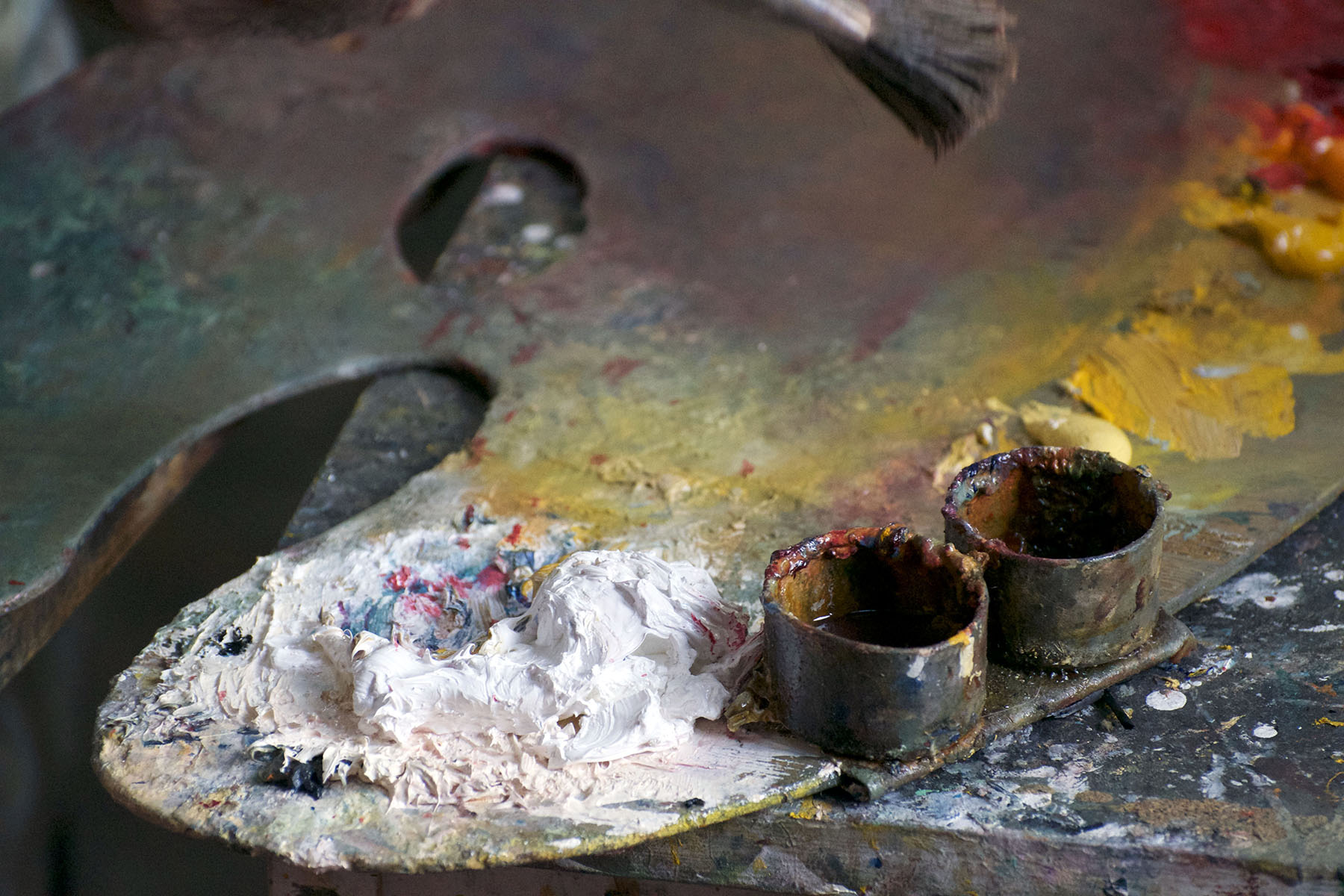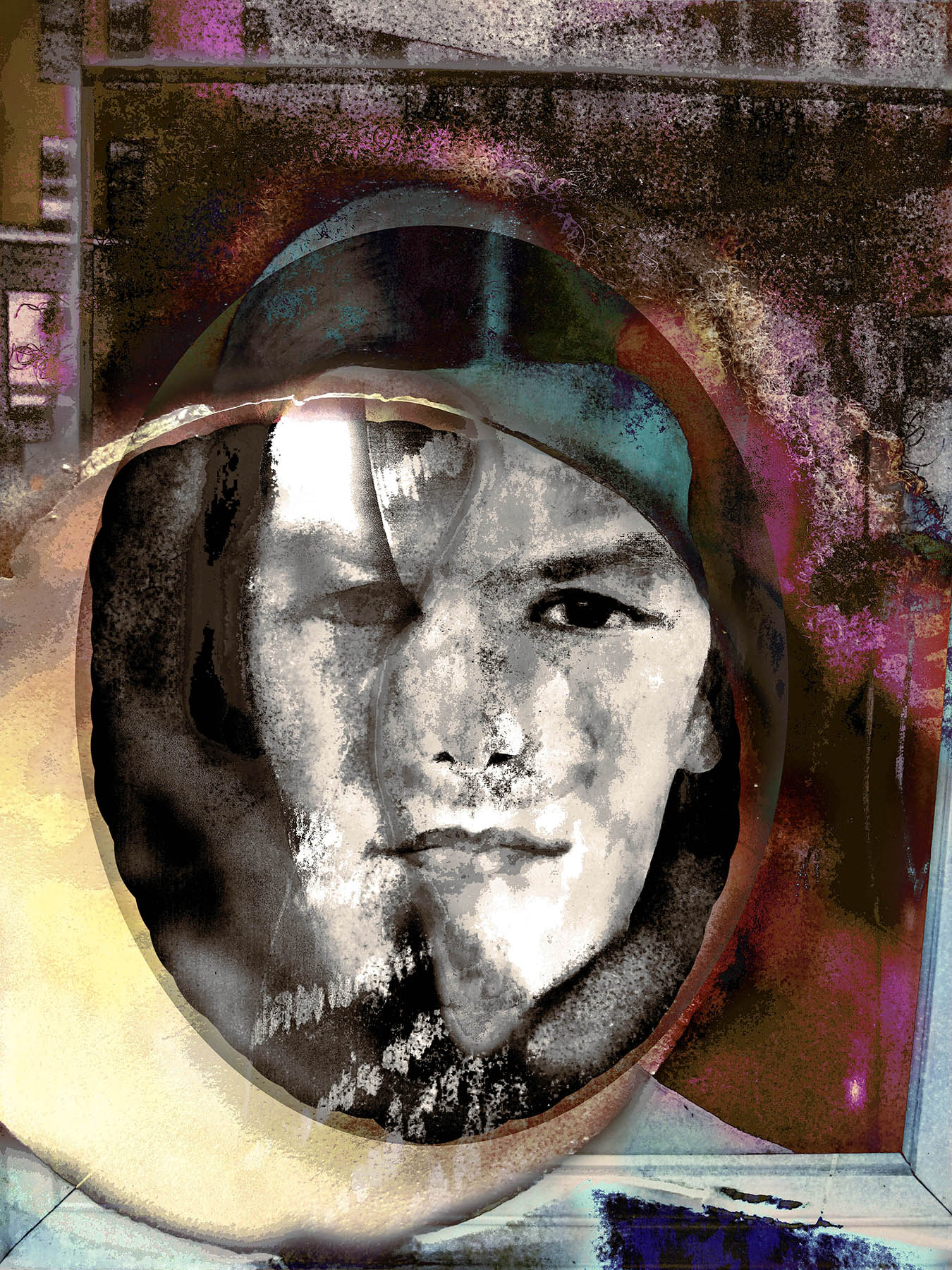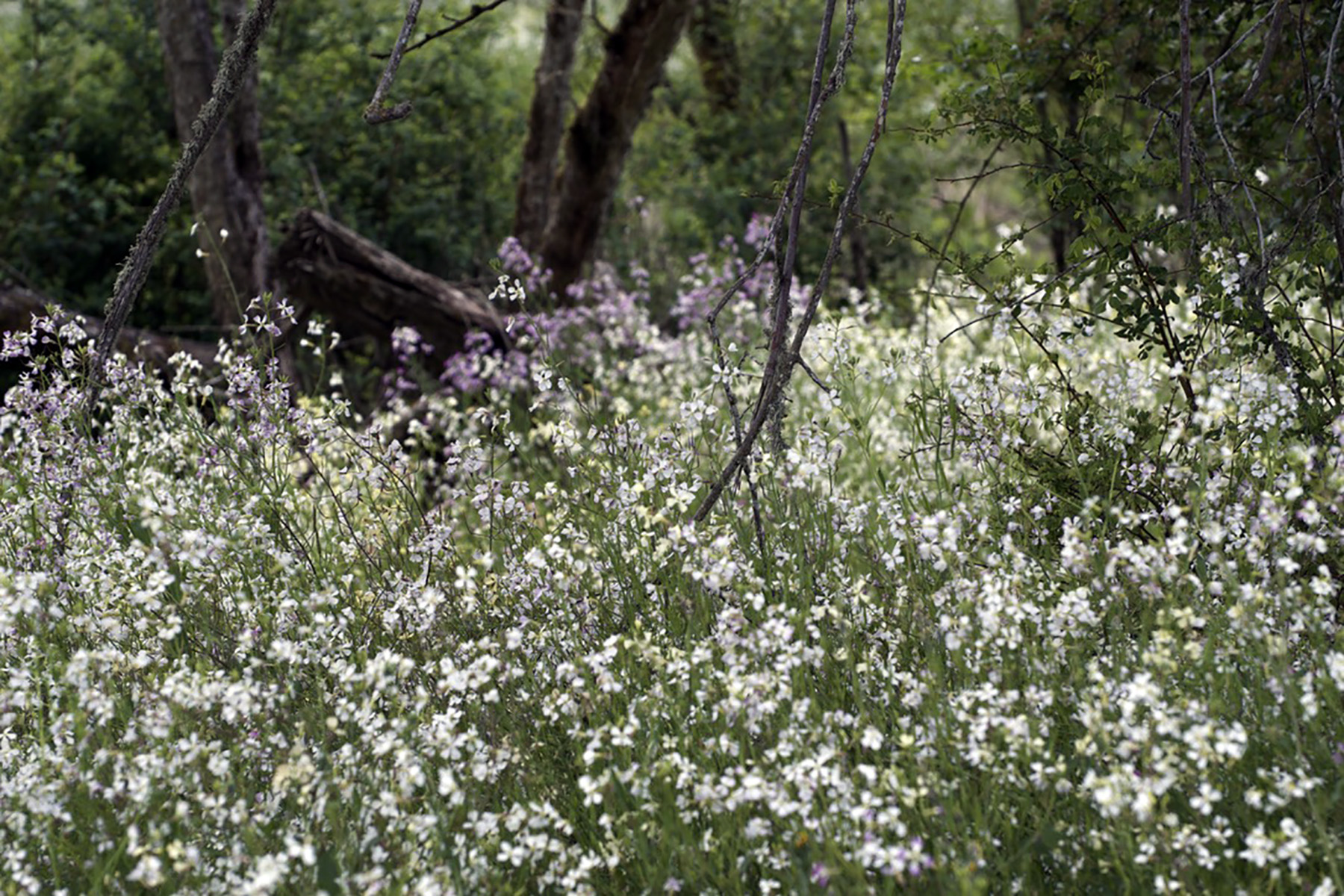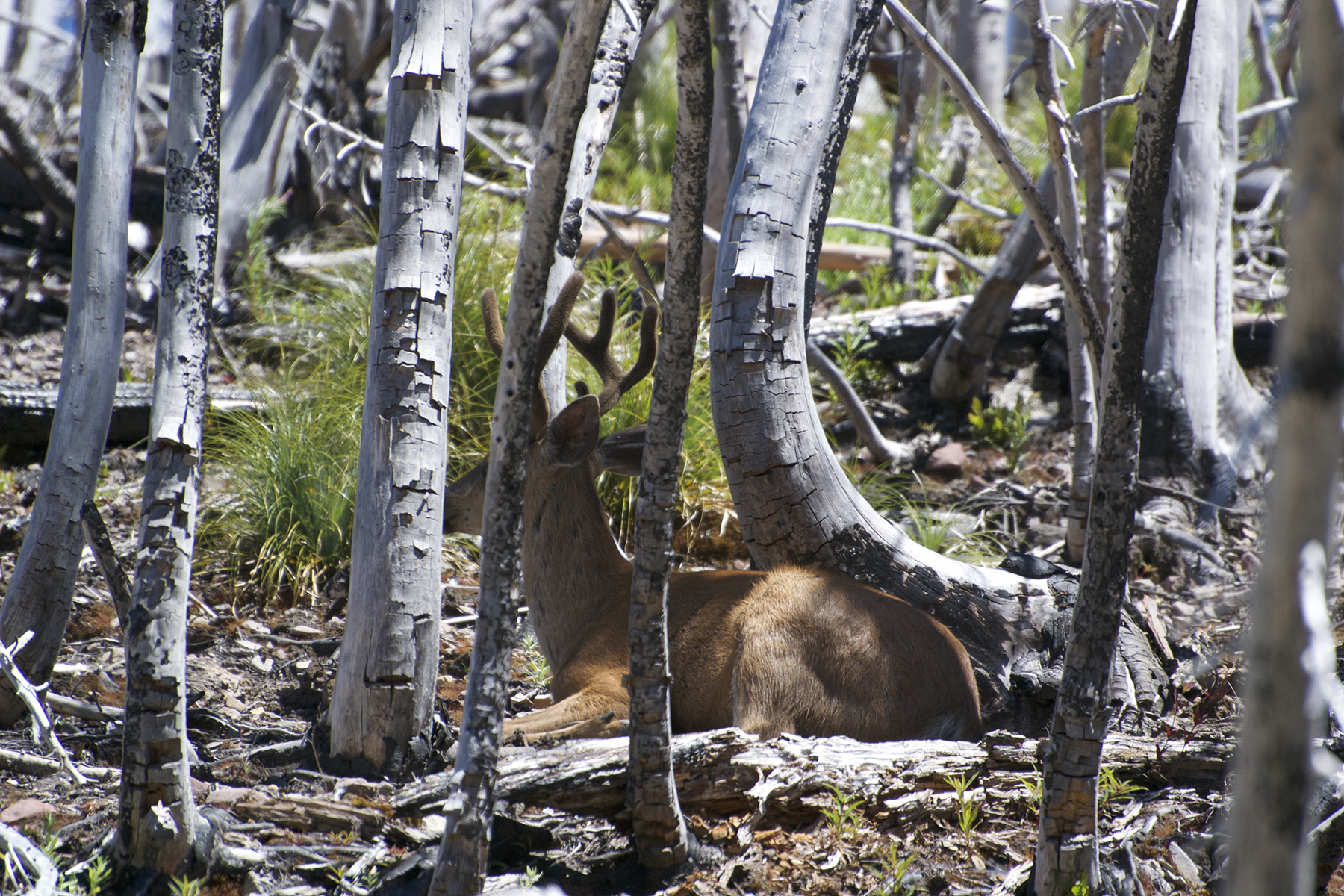In what seems another lifetime, I used to go to San Francisco for psychology conferences, or to attend the opera, or, as you might remember, document some of the climate change-movement protests last year. Whirlwind trips that focussed on the task or pleasure at hand, not leaving much time to explore the city’s history.

I did walk once or twice through Yerba Buena Gardens, to or from a visit to SF Moma or the Contemporary Jewish Museum, mostly engaging in people watching. People who were nowhere to be seen this time around – when I came to photograph the site, I was one of maybe three or four people hanging out there in the middle of a Tuesday morning. We are talking an area comprising a few city blocks! The name means Good Herb in Spanish, referring to Spearmint and other herbs in the mint family. None of those to be seen, either.

The space is organized on several levels, with a pedestrian bridge, meandering pathways, large swaths of lawn, cafés, iceskating rink and bowling alleys, kids’ playgrounds, conference centers and art exhibits. The public art ranges from middling to beautiful, with no real cohesive curation detectable. Or maybe that’s just me, too hot on a mid-October day going on 90 degrees having fought yet another battle for parking, drowning my judgement in sweat.


There is a kinetic sculpture, Urge by Chico MacMurtrie, a half man half woman who moves when you do, sitting down or standing up on top of the world.


There is a sculpture that reminds too much of a certain Californian actor elected president, The Shaking Man by Terry Allen. Judging by the shininess of his hand(s) people are eager to shake indeed.


Covid-19 related landscape art the has seen better days in the but three weeks or so since installation by artist Tosha Stimage. The social distancing devices are supposed to fade and make room for the next artwork to arrive mid-November, but it is a pity that their original beauty can only be guessed at.

Photograph above from the garden web site

And then there are the walls and reflecting streams by Danish artist Lin Utzon, a compelling area of stillness, movement, pattern and integration of the surrounding cityscape through reflection. The fluted granite walls, perforated with large-scale silver fissures, seem to belong to the sky, the air, the light in all its San Franciscan brightness. Or the light belongs to them – depending on your shift in perspective. A photographer’s pleasure.





By chance I came across a fabulous illustrated history of the area once I started reading up on the site. The historic photographic footage alone is worth checking this document out, compiled as The Memory of Traces by artist Jenny Odell during a residency at the Yerba Buena Art Center 5 years ago. Anybody interested in or from SF should check it out – it is revelatory!

I learned that the area was originally home to Filipino immigrants and hotels for elderly veterans, pawnshops, and small businesses. When developers swooped in, the people formed a citizen group to prevent displacement, with limited success (public housing was erected in other places for the people who had to leave.) After court battles and infighting among developers for the best use of the area, a proposition passed in 1976 that allowed an underground convention center, with a park and cultural facilities above it.
The gardens were finished in the mid 90s. During construction, a lot of burial sites and Native American artifacts ranging back to 6000 (!) years were discovered. A memorial to the indigenous tribe of the Muwekma Ohlone is now part of the gardens.

A huge entertainment center, the Metreon, was erected after the gardens. It did not do well, and has re-emerged, now as a High tech experience, in 2012. Suffice it to say, that Rebeccah Solnit mused “a more obsequious monument to capitalism would be hard to find.”
I leave it at that. The gardens certainly enrich people who need to stop for a moment in a green oasis when the surrounding intensity of the city starts to grate. If I say so myself.

Music today is by a trio from the San Francisco Chamber Orchestra, playing Beethoven and friends in their backyard two weeks ago.
